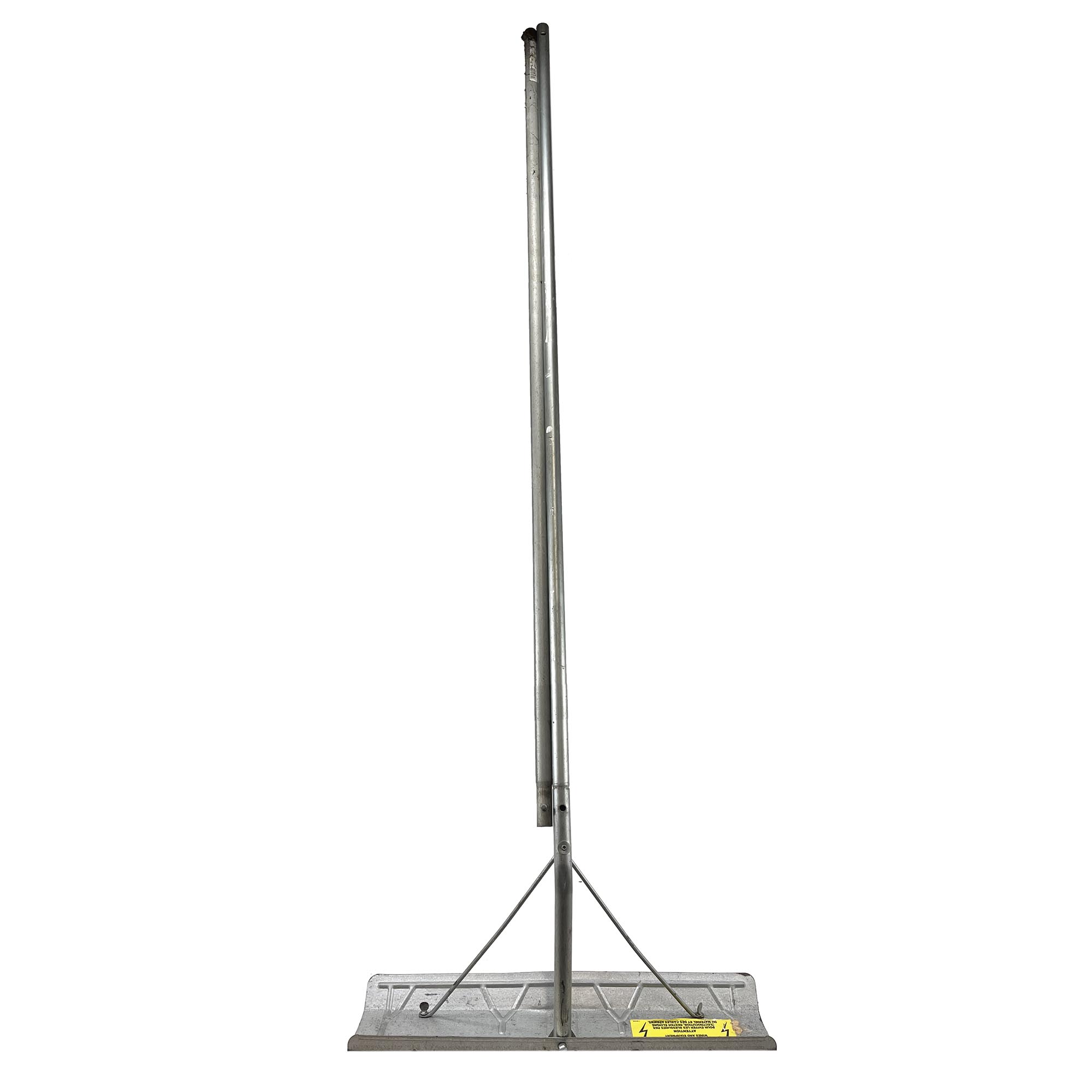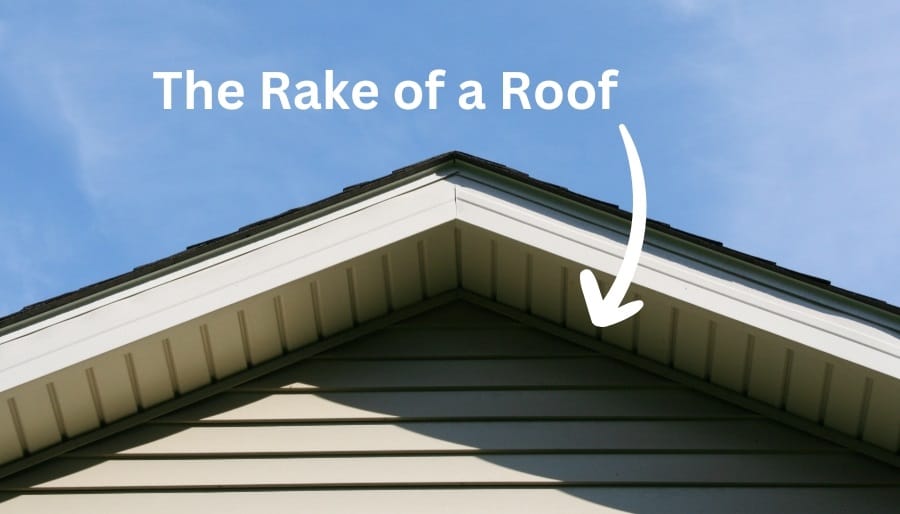Understanding The Rake Of A Roof: A Comprehensive Guide
Let’s talk about the rake of a roof, shall we? It’s one of those terms that might not pop up in everyday conversation, but if you’re diving into construction, home improvement, or even just curious about how your house is built, it’s definitely worth knowing. The rake of a roof refers to the slanted edge of the roof that runs parallel to the gable end. Think of it as the finishing touch that gives your roof its sleek, polished look. Now, before we get too deep into it, let’s break down why this matters and why you should care.
When you think about roofing, most people focus on the big stuff—like shingles, gutters, and maybe even the pitch. But the rake? That’s where the details live. It’s like the icing on the cake, making sure everything fits together perfectly. Whether you’re building a new home, renovating an old one, or just trying to understand what your contractor is talking about, understanding the rake of a roof can save you time, money, and headaches.
So, grab a cup of coffee (or tea, if that’s your jam), and let’s dive into this world of roofing terminology. By the end of this guide, you’ll be speaking fluent “roof” and impressing your friends with your newfound knowledge. Trust me, it’s more exciting than it sounds!
Read also:Laura Sommaruga The Rising Star In The World Of Music And Entertainment
What Exactly is the Rake of a Roof?
Alright, let’s get technical for a moment. The rake of a roof is essentially the sloping edge of the roof that runs along the gable end. It’s the part of the roof that frames the triangular section, giving it that iconic shape. If you’ve ever seen a house with a gable roof, you’ve seen the rake in action. It’s not just for looks, though—this part of the roof plays a crucial role in structural integrity and water drainage.
Now, here’s where things get interesting. The rake can vary in design and material depending on the type of roof you have. Some rakes are simple, while others are adorned with intricate details like fascia boards, trim, or even decorative moldings. But no matter how fancy it gets, the rake is always there, doing its job quietly in the background.
Why Does the Rake Matter?
You might be wondering, “Why should I care about the rake of a roof?” Great question! Here’s the deal: the rake is more than just a decorative element. It’s a critical part of the roof’s structure that helps direct water away from the house, preventing leaks and damage. Plus, it adds aesthetic value, giving your home that polished, finished look.
- Protects against water damage
- Enhances the overall appearance of your home
- Provides support for the roof’s structure
- Can be customized to match your home’s style
So, whether you’re building a new home or maintaining an old one, paying attention to the rake can make a big difference in the long run.
Types of Roof Rakes
Not all rakes are created equal. Depending on the style of your roof, you might encounter different types of rakes. Let’s take a look at some of the most common ones:
1. Open Rake
An open rake is exactly what it sounds like—the edge of the roof is exposed, showing the rafters underneath. This style is popular in modern architecture because it gives a clean, minimalist look. However, it requires extra care to ensure proper waterproofing.
Read also:Unveiling The Mystery Of Ssotwe A Deep Dive Into Its Origin Significance And Impact
2. Closed Rake
On the other hand, a closed rake is enclosed, often with fascia boards or trim. This type of rake is more traditional and offers better protection against the elements. It’s also easier to maintain, which makes it a favorite among homeowners.
3. Decorative Rake
If you’re looking to add some personality to your home, a decorative rake might be the way to go. This style incorporates ornamental elements like moldings, brackets, or even lighting, creating a unique and eye-catching look.
No matter which type of rake you choose, it’s important to consider both functionality and aesthetics to ensure it meets your needs.
How to Measure the Rake of a Roof
Measuring the rake of a roof might sound complicated, but it’s actually pretty straightforward. All you need is a tape measure, a level, and a little patience. Here’s a step-by-step guide to help you out:
- Start by identifying the rake edge of the roof.
- Using a ladder, climb up to the roof safely (or hire a professional if you’re not comfortable).
- Place the level against the rake edge to ensure it’s straight.
- Measure the length of the rake from the top of the roof to the edge.
- Record your measurements for future reference.
And there you have it—a simple way to measure the rake of a roof. Just remember to always prioritize safety when working on or around your roof.
Materials Used in Roof Rakes
When it comes to materials, the options are endless. The type of material you choose will depend on factors like budget, climate, and personal preference. Here are some of the most common materials used in roof rakes:
- Wood: Classic and versatile, wood is a popular choice for its natural beauty and ease of customization.
- Vinyl: Durable and low-maintenance, vinyl is a great option for homeowners looking for a long-lasting solution.
- Aluminum: Lightweight and resistant to rust, aluminum is ideal for coastal areas where saltwater exposure is a concern.
- Fiber Cement: Strong and weather-resistant, fiber cement is becoming increasingly popular for its durability and aesthetic appeal.
Each material has its pros and cons, so it’s important to weigh your options carefully before making a decision.
Common Issues with Roof Rakes
Even the best-maintained roofs can experience issues with their rakes over time. Here are some of the most common problems and how to fix them:
1. Water Leaks
One of the biggest concerns with roof rakes is water leaks. This can happen if the rake isn’t properly sealed or if the flashing becomes damaged. To prevent leaks, make sure to inspect the rake regularly and repair any damaged areas promptly.
2. Rotting Wood
If you have a wooden rake, rot can become a problem over time, especially in humid climates. To prevent this, use treated wood and apply a water-resistant sealant regularly.
3. Loose Trim
Loose or damaged trim can not only affect the appearance of your roof but also compromise its structural integrity. If you notice any loose pieces, secure them immediately to prevent further damage.
By addressing these issues early, you can extend the lifespan of your roof and avoid costly repairs down the line.
Maintaining Your Roof Rake
Maintenance is key to keeping your roof rake in top condition. Here are some tips to help you keep it looking great:
- Inspect the rake regularly for signs of damage or wear.
- Clean debris from the roof and rake area to prevent clogs and water buildup.
- Apply sealants or coatings as needed to protect against the elements.
- Hire a professional for annual inspections to catch any potential issues before they become major problems.
A little bit of maintenance goes a long way in ensuring your roof rake stays strong and functional for years to come.
Cost Considerations for Roof Rakes
Let’s talk money. The cost of installing or repairing a roof rake can vary widely depending on factors like size, material, and location. On average, you can expect to pay anywhere from $500 to $2,000 for a standard rake installation. If you’re going for a more elaborate design, the cost could be higher.
Keep in mind that while it might be tempting to cut corners to save money, investing in quality materials and professional installation will pay off in the long run. Remember, your roof is one of the most important parts of your home, so it’s worth doing it right.
DIY vs. Professional Installation
Now, here’s the million-dollar question: should you tackle the rake installation yourself, or hire a professional? If you’re handy with tools and have experience working on roofs, a DIY project might be a fun challenge. However, if you’re not confident in your skills, it’s always better to leave it to the experts.
Hiring a professional ensures that the job is done correctly and safely, which is especially important when working at heights. Plus, professionals often have access to high-quality materials and equipment that you might not have.
Conclusion: Why Understanding the Rake of a Roof Matters
And there you have it—a comprehensive guide to the rake of a roof. From understanding what it is to learning how to maintain it, we’ve covered all the bases. The rake might not be the most glamorous part of your roof, but it’s certainly one of the most important.
So, what’s next? If you’re thinking about installing or repairing a roof rake, take the time to research your options and consult with a professional. And don’t forget to share this article with your friends and family—knowledge is power, after all!
Have any questions or thoughts? Drop a comment below or reach out to us on social media. We’d love to hear from you!
Table of Contents
- What Exactly is the Rake of a Roof?
- Why Does the Rake Matter?
- Types of Roof Rakes
- How to Measure the Rake of a Roof
- Materials Used in Roof Rakes
- Common Issues with Roof Rakes
- Maintaining Your Roof Rake
- Cost Considerations for Roof Rakes
- DIY vs. Professional Installation
- Conclusion
What Is Rake On Roof? Your Ultimate Guide To Understanding Roof Rakes
Shane And Abigail Libel: The Untold Story That Everyone’s Buzzing About!
What Channel Do The Grammy Awards Come On? Your Ultimate Guide To Catching The Biggest Night In Music

Roof Rake OTL Webstore

What Is The Rake of a Roof? Explained! Building Code Trainer

Metal Roof Rake Flashing 12.300 About Roof